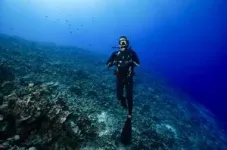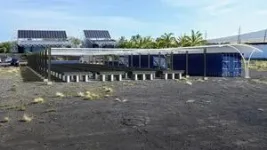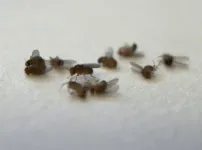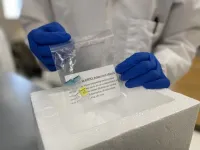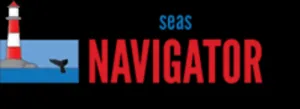The community-based effort looks to fuse state-of-the-art science programs with the leadership and cultural knowledge of Hawaiʻi’s community partners to enable coastal and reef sustainability for generations to come. Named ʻĀkoʻakoʻa (pronounced ah kō-a kō-a), the effort shares a dual meaning ʻto assemble’ and ‘coral.’
“For decades, our original program focused on diagnosing land and reef problems using high-tech satellite, airborne and field technologies,” said Greg Asner, director of ASU’s Center for Global Discovery and Conservation Science, and longtime resident of Hawaiʻi. “The new program further expands this diagnostic work, but it focuses far more effort on interventions that support Hawaiʻi’s communities, both coral and human, as one force.”
ʻĀkoʻakoʻa is made possible with an initial donation of $15 million from the Dorrance family and Dorrance Family Foundation, combined with collaborative funding via Sen. Brian Schatz’s (D-HI) office, Hawaiʻi Division of Aquatic Resources (DAR), National Oceanic and Atmospheric Administration (NOAA), and ASU. The initiative looks to greatly expand restorative work on coral reefs and coastlines of Hawaiʻi and beyond.
“It is our kuleana to protect and care for what we love, our coral reefs and the species they harbor, and all of Hawaiʻi”, noted Jacquie and Bennett Dorrance. “Success in saving our reefs relies on ‘laulima’, many hands working together. The Dorrance family and The Dorrance Family Foundation hope this investment ignites action and vital funding, and we encourage others to join us in support of this tremendous effort. The time is now.”
Asner, an ASU Julie Ann Wrigley Global Futures Laboratory scientist and director of ASU’s research program in Hawaiʻi, said corals are critical to reef biodiversity and home to millions of marine species, which dot the seafloor with a dizzying array of shapes and sizes. He added that corals are also the “canary in the coal mine” when it comes to our collective behavior – where corals flourish, land and sea are usually well stewarded.
But over the past 50 years, Hawaiian coral communities have undergone an alarming decline due to pollution, climate change and overfishing. His group has spent the last decade monitoring these impacts, from the land, sea and air; from ocean heat waves to agricultural runoff to the chemistry of the oceans. He said it’s finally time to turn the tide by more deeply connecting human and coral communities in a partnership for a more resilient future. That notion was seconded by several of Hawaiʻi’s most respected community leaders who are key partners in the initiative.
Cindi Punihaole, who was born and raised in Kona and is with Hawaiʻi-based The Kohala Center, said her elders stressed the importance of the relationship between the uplands and the sea, and that for everything in the ocean, there is a partner on the land.
“The land partner is to protect its ocean partner. We are taught to ‘Mālama I Ka ʻĀina’ (caring for and respecting the land),” said Punihaole, whose nonprofit focuses on research, education and stewardship for healthier ecosystems. “When the land is healthy and clean water flows to the shores, then our corals and fish will flourish. We strive for a world of balance and righteousness.”
With major contributions from community leaders, cultural practitioners, ecologists, data scientists and global information systems experts, the initial core focus for restorative work will be West Hawaiʻi island, comprising 120 miles of reef and one of the largest coral communities in the Hawaiian Archipelago. Collectively, the West Hawaiʻi coastline harbors a huge range of human and coral conditions.
The responsibility for this type of ocean care is enormous but in proven collaborative hands, said one nonprofit leader who works closely with the university.
“We support the work of ASU and the Hawaiʻi Marine Education and Research Center to malama (care for) the corals of West Hawaiʻi,” said Kaʻimi Kaupiko, president of Kalanihale, a grassroots organization designed to improve the educational, environmental and cultural well-being of community members of Miloliʻi and South Kona. “The reefs from Ūpolu to Ka Lae are one of the most diverse systems in all of Hawaiʻi, but with the effects of climate change, we need to be proactive in caring for them.”
A key part of the collaboration is a new state-of-the-art coral research and propagation facility located at the joint Ridge to Reef Restoration Center in Kailua-Kona. The center is under construction now in partnership with a land restoration organization called Terraformation. The coral facility will be the largest in the world when completed and will become the hub for testing corals for subsequent reef restoration.
“These resources are an exciting development for the multiple partners and communities working closely together to scale-up active coral restoration in Hawaiʻi,” said Carrie Selberg Robinson, director of the NOAA Fisheries Office of Habitat Conservation.
Asner said lessons learned in ʻĀkoʻakoʻa will be shared with communities across the state of Hawaiʻi and worldwide.
“Our successes and failures will lead to new perspectives and know-how, which will be broadcast to a network of partners and participants through our Allen Coral Atlas program and ASU School of Ocean Futures,” Asner said. “As a stage for the integration of cultural practice, management and science, ʻĀkoʻakoʻa will seed a deeper connection between human and coral communities in an era of climate change.”
Brian Neilson, head of the Hawaiʻi Division of Aquatic Resources, said ʻĀkoʻakoʻa is a visionary program that can set a powerful path forward for the future.
“Restoring and enhancing our coral reefs takes a fusion of stewardship, management and high-tech science. ʻĀkoʻakoʻa will be a major example of this blended process for West Hawaiʻi, noted Neilson. “We are pleased to partner with ASU's education and research programs in developing and implementing restoration approaches that will benefit communities along the West Hawaiʻi coastline.”
ASU President Michael M. Crow said ʻĀkoʻakoʻa and the university’s engagement in Hawaiʻi stems from its official charter, which includes commitments to “advance research and discovery of public value,” and to “assume fundamental responsibility for the economic, social, cultural and overall health of the communities it serves.”
“We recognize that the health of our planet is tied to the health of countless interconnected systems,” Crow said. “What happens on land affects the health of our oceans, so threats to our coral reefs stand to impact everyone. This collaboration represents the vast potential to accelerate positive change by joining scientific knowledge and cultural wisdom to address a critically important challenge facing our world.”
END

